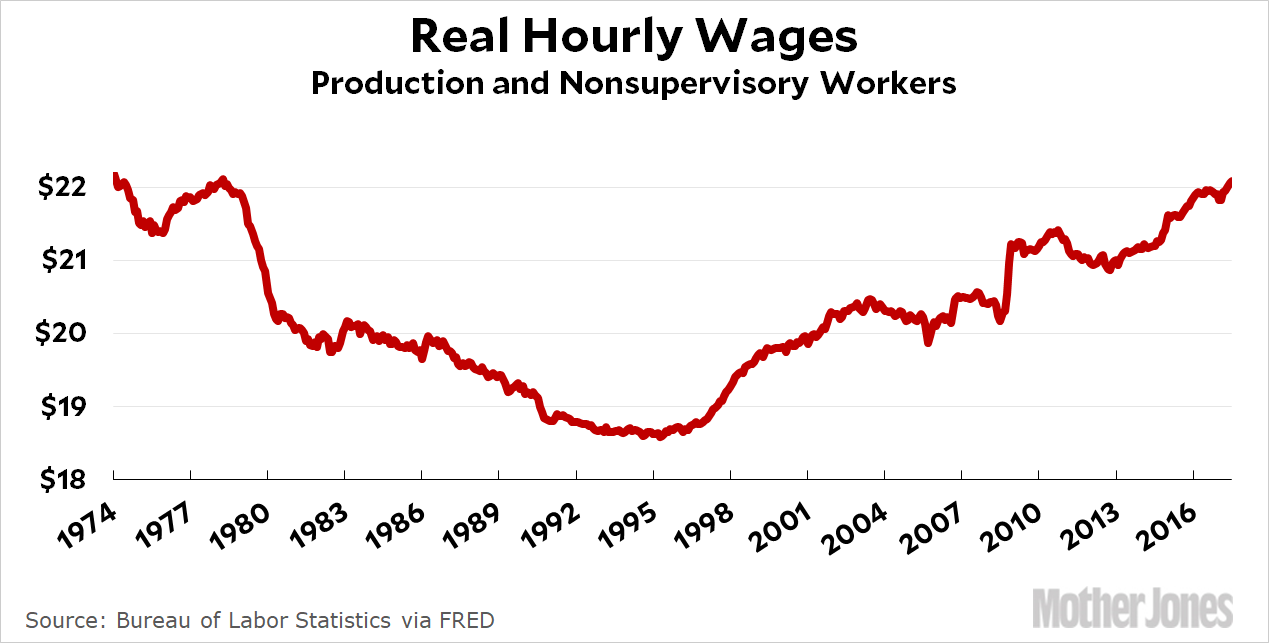Here’s a paragraph from the Wall Street Journal today:
Real wages for nonsupervisors, which take inflation into account, topped $22 an hour this year, the best inflation-adjusted reading since January 1973,¹ according to Labor Department data. The nonsupervisory figure covers about 70% of the workforce and excludes managers who are more likely to receive bonuses, stock options and other forms of nonwage compensation.
Translation: wage growth for ordinary workers has been so bad that it’s taken 44 years to finally catch up to the levels of 1973.
The article goes on to talk about wage growth during this recovery compared to past recoveries, but you really need to see the whole picture in one place to understand what’s going on. Here it is:

Roughly speaking, the years from 1978 to 1995 were a horror show. During that 17-year period, wages dropped by 15 percent, or 0.9 percent per year. Since then, however, wages have grown steadily. In the 22 years from 1996 to 2017, wages have increased 18 percent, or about 0.9 percent per year.
This is what makes the whole “economic anxiety” interpretation of the 2016 election so peculiar. In 1992, workers had been getting stiffed for over a decade, and winning a campaign by appealing to this hardship made sense.
But in 2016? Wages have bounced around a bit, but basically workers have been making steady gains for over two decades. In particular, between 2012 and 2016 wages rose a healthy 1.35 percent per year—one of the country’s best 4-year periods since the late 60s—and the unemployment rate dropped more than three points. It’s easy to argue—and I do!—that worker gains should have been even higher, but it’s hard to argue that ordinary workers have been in such dire straits that they were willing to vote for anyone who promised to look out for them.
At the same time, there’s little evidence that racism had any more effect on the 2016 election than it did on previous elections. That’s not for lack of trying on Trump’s part, but the white vote has been reliably Republican at about the same level for three decades.² The deplorables who voted for Trump all voted for Bush and McCain and Romney too.
So what’s left? Not much except for James Comey’s letter re-opening Hillary Clinton’s email case. Even with that, Clinton still outperformed the fundamentals. Without it, she would have won.
¹Actually, I think this ought to be January 1974, but what’s a year between friends?
²Except for 1992 and 1996, when Ross Perot split the conservative white vote.

















